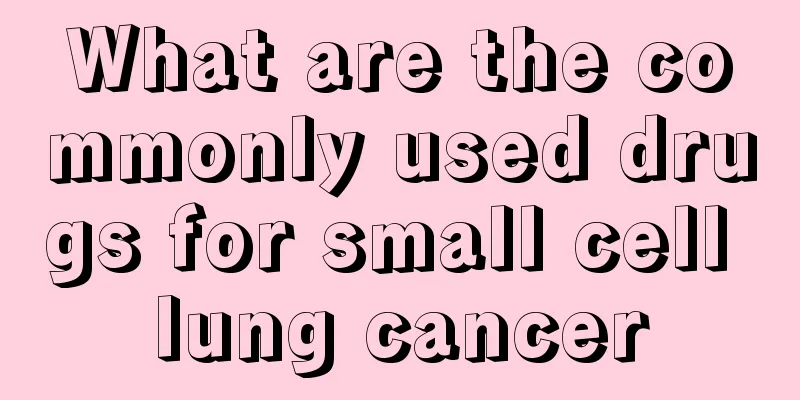What are the commonly used drugs for small cell lung cancer

|
People who smoke are most likely to develop small cell lung cancer. The current natural pollution situation is quite serious, which has led to a significant increase in the number of people suffering from small cell lung cancer. There are many types of this disease, and there are also many drugs for treatment. Let us take a look at the commonly used drugs for small cell lung cancer. Small cell lung cancer accounts for 15% of lung cancer cases, and most (about 98%) are related to smoking. Clinically, it is divided into limited stage and extensive stage according to the scope of invasion. Limited stage: The lesion is located in one half of the chest cavity and can be safely surrounded by a radiation field. Only less than 5% of patients can receive surgical treatment, and the rest should be given synchronous chemotherapy + radiotherapy, except for those without lymph node metastasis, who need chemotherapy alone. Chemotherapy regimen: cisplatin + edioplatin. If cisplatin is not tolerated, carboplatin can be substituted. Radiotherapy starts in the first or second cycle; the dose can be twice a day, 1.5Gy/time, cumulative 45Gy; once a day, 1.8-2.0Gy/time, cumulative 60-70Gy. Extensive stage: The lesion exceeds one half of the chest cavity, including malignant pleural effusion or pericardial effusion or blood metastasis. If combined with local symptoms, such as superior vena cava compression, pulmonary infarction, bone metastasis, spinal cord compression, chemotherapy + radiotherapy should be given. If patients with brain metastases have brain symptoms, radiotherapy + chemotherapy is given; otherwise, chemotherapy first and then radiotherapy. Chemotherapy regimen: cisplatin + estoplatin, carboplatin + estoplatin, cisplatin + irinotecan, carboplatin + irinotecan, cyclophosphamide + doxorubicin + vincristine. Patients with recurrence and metastasis who relapse within 2-3 months and are in good physical condition can be treated with cyclophosphamide, taxanes, gemcitabine, irinotecan, and topotecan. Patients who relapse within 3-6 months can be treated with topotecan, irinotecan, cyclophosphamide + doxorubicin + vincristine, gemcitabine, taxanes, oral etoposide, and vincristine. Patients who are over 6 months old can continue with the original regimen. In summary, for limited-stage, marginal, operable small cell lung cancer, surgery can be used after neoadjuvant chemotherapy; for extensive-stage small cell lung cancer, chemotherapy supplemented with radiotherapy is still the main treatment, and brain metastasis should be actively prevented. |
<<: What are the treatment principles for small cell lung cancer
>>: What are the commonly used drugs for treating small cell lung cancer
Recommend
How long can patients with advanced gastric cancer live? It depends on many factors
The survival period of patients with advanced gas...
Anal fistula sitz bath method
Most people are familiar with anal fistula. The i...
What is the disease of spitting white phlegm_Why do I keep spitting white phlegm
Many people have this situation, that is, they al...
What to do if chili oil gets into your eyes
Due to geographical and climatic factors, people ...
What are the dangers of using a pillow that is too high?
Often when sleeping, both adults and children lik...
Why do I have stomachache when I eat too fast? This is what's going on
In recent years, as people's pace of life has...
Is it serious to have a pituitary tumor
In recent years, pituitary tumors have become mor...
Basic yoga moves before bed to help you have a good sleep
Yoga is a common way of maintaining health. Pract...
What health supplements should I take for gastric cancer
Gastric cancer is the most common malignant tumor...
The belly button smells bad
There are many common problems in life. When solv...
How to fix the problem of egg white not being able to be whipped
When making cakes and some desserts, you need to ...
Can I see a Chinese doctor for advanced bile duct cancer?
Generally, bile duct cancer is already in the mid...
Can uterine cancer in the elderly be cured?
Can uterine cancer be cured in the elderly? Uteri...
Medicine for anal fistula
There are many reasons for anal fistula. In addit...
What is vanillin
Vanillin has a good flavoring effect. It will not...









